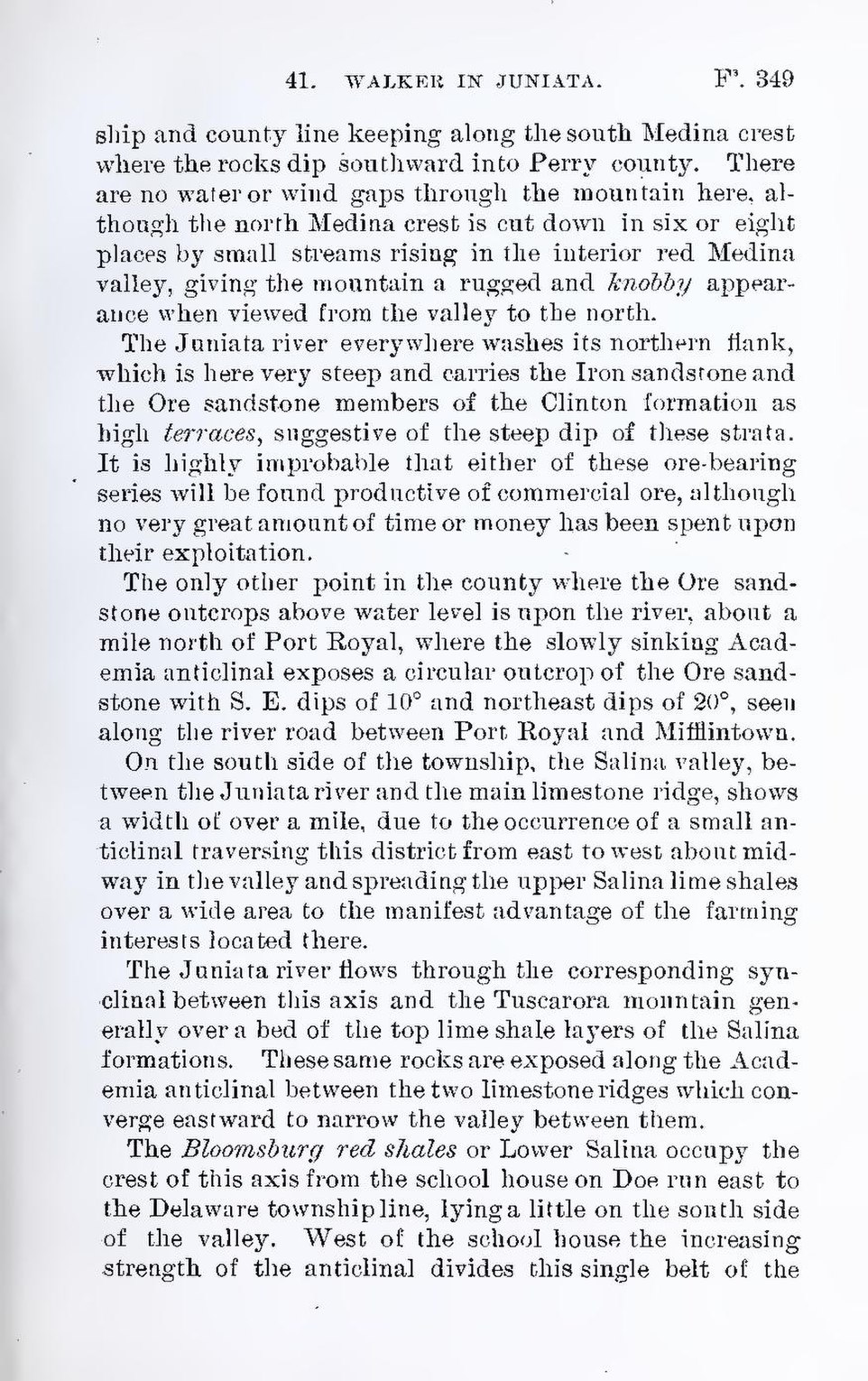ship and county line keeping along the south Medina crest where the rocks dip southward into Perry county. There are no water or wind gaps through the mountain here, although the north Medina crest is cut down in six or eight places by small streams rising in the interior red Medina valley, giving the mountain a rugged and knobby appearance when viewed from the valley to the north.
The Juniata river everywhere washes its northern flank, which is here very steep and carries the Iron sandstone and the Ore sandstone members of the Clinton formation as high terraces, suggestive of the steep dip of these strata. It is highly improbable that either of these ore-bearing series will be found productive of commercial ore, although no very great amount of time or money has been spent upon their exploitation.
The only other point in the county where the Ore sandstone outcrops above water level is upon the river, about a mile north of Port Royal, where the slowly sinking Academia anticlinal exposes a circular outcrop of the Ore sandstone with S. E. dips of 10° and northeast dips of 20°, seen along the river road between Port Royal and Mifflintown.
On the south side of the township, the Salina valley, between the Juniata river and the main limestone ridge, shows a width of over a mile, due to the occurrence of a small anticlinal traversing this district from east to west about midway in the valley and spreading the upper Salina lime shales over a wide area to the manifest advantage of the farming interests located there.
The Juniata river flows through the corresponding synclinal between this axis and the Tuscarora mountain generally over a bed of the top lime shale layers of the Salina formations. These same rocks are exposed along the Academia anticlinal between the two limestone ridges which converge eastward to narrow the valley between them.
The Bloomsburg red shales or Lower Salina occupy the crest of this axis from the school house on Doe run east to the Delaware township line, lying a little on the south side of the valley. West of the school house the increasing strength of the anticlinal divides this single belt of the
